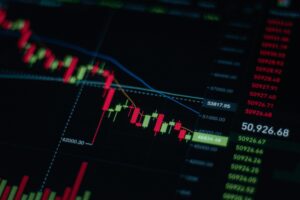For the latest industry trends and in-depth analysis, please visit https://lumberflow.com/my-account Sign up for LumberFlow membership.
Fannie Mae Releases May Economic and Housing Outlook: Market Expectation Adjustments and Their Impact on the Lumber Industry
Release date: May 21, 2025
WASHINGTON --Fannie MaeThe Economic and Strategic Research (ESR) team of Fannie Mae released its latest Economic and Housing Outlook report for May on Wednesday. The report forecasts future economic growth, housing sales and mortgage rates in the United States, which are important factors for the global timber market, especially North American timber exports to China.
Interpretation of core forecast data
According to the ESR report, the total sales of single-family homes are expected to reach 4.92 million in 2025. Among them, the sales of existing homes are expected to reach 4.24 million, which meansNew home sales are expected to be around 680,000 unitsThis data point is critical in assessing the immediate demand for wood in construction.
The ESR team noted that the adjustment in the housing sales forecast was partly due to a reduction in its expectations for mortgage rates, which are now forecast to fall to 6.1% by the end of 2025 and 5.8% by the end of 2026. Lower mortgage rates typically stimulate demand for home purchases, which could boost new home construction activity.
In terms of macroeconomics, the latest outlook predicts that, based on fourth quarter year-on-year growth, U.S. real gross domestic product (GDP) will grow by 0.7% in 2025 and by 2.0% in 2026. Although the growth forecast for 2025 is relatively modest, 2026 presents a more positive recovery trend.
Potential impact on Chinese timber importers
As one of the world's major timber producers and exporters, the prosperity of the US domestic housing market directly affects timber consumption and export volumes. This Fannie Mae report provides the following insights for Chinese timber importers:
- Demand signal: Although expected lower mortgage rates could provide a boost, the 680,000 new home sales forecast and 0.7% GDP growth (2025) suggest that domestic lumber demand in the U.S. is likely to grow slowly. This could mean that North American lumber suppliers will shift more capacity to export markets, including China.
- Price pressure: If the recovery of domestic demand in the United States is slower than expected, North American lumber suppliers may adopt a more flexible strategy on export prices to win international orders. Chinese importers may seek more favorable purchasing terms in this context.
- Market dynamics: Paying attention to ongoing changes in the U.S. economy and housing market is critical to predicting supply and price trends for major North American export timber species such as SPF and Douglas fir.
LumberFlow Expert Interpretation
As an authority in the field of cross-border timber trade analysis, LumberFlow believes that Fannie Mae's latest outlook provides key market signals and decision-making basis for Chinese timber importers.
1. Quantitative impact on supply structure:
Fannie Mae's forecast of approximately 680,000 new single-family home sales in 2025, based on an average of approximately 15,000 board feet (MBF) of softwood per new home (this is an industry average estimate, and the specific value varies depending on the size of the house), means that the demand for lumber for new single-family home construction in the United States will be approximately 10.2 billion board feet. If this demand level is lower than previously expected or the growth is weak, North American sawmills may face a slowdown in domestic order growth. Based on the estimated total softwood production of approximately 65-70 billion board feet in 2024 in North America (estimated range), even a small fluctuation in domestic demand in the United States (such as ±5%) may result in hundreds of millions to billions of board feet of supply needing to find new markets or production adjustments. For Chinese buyers, this means an increased possibility of obtaining stable supply from the North American market in the short term, but they should be wary of the potential risk of production cuts due to weak demand.
2. Policy expectations and compliance costs:
The expected reduction in mortgage rates in the report (to 6.1% by the end of 2025 and to 5.8% by the end of 2026) mainly reflects expectations for future monetary policy easing. Although this is not a direct trade policy, its impact on the real estate market indirectly regulates timber demand. For Chinese importers, compliance costs are mainly reflected in import tariffs, inspection and quarantine fees, etc. The current report content does not directly trigger new compliance requirements, but it is necessary to pay attention to whether the US economic stimulus policy will be accompanied by clauses such as "Buy American", which will indirectly affect the composition or specification requirements of timber exports. LumberFlow reminds importers that any economic policy adjustments originating from the United States should evaluate their potential indirect impact on trade fluidity and costs.
3. Sawmill operation and supply to the Chinese market:
U.S. housing market sales expectations are directly related to the capacity utilization and operating decisions of North American sawmills. If the sales of 680,000 new homes combined with a GDP growth of 0.7% (2025) fails to significantly boost wood consumption, some high-cost or low-efficiency sawmills may choose to temporarily stop production or reduce shifts. For example, if the overall demand for coniferous timber in North America drops by 3-5% as a result, the annualized output of approximately 2-3.5 billion board feet may be affected. This will directly affect the supply of major timber species such as SPF, Douglas fir, and southern pine exported to China. Chinese importers need to pay close attention to the operating rates, inventory levels, and export quotation trends of sawmills in major production areas in North America to determine the stability of supply and price volatility.
4. Analysis of price transmission mechanism:
The prices in the global lumber market are linked. Changes in domestic lumber prices in the United States (such as the Random Lengths Framing Lumber Composite Price) are usually transmitted to export prices to China through a lag period of 1-2 months. If the slow recovery of the economy and housing market predicted by Fannie Mae puts pressure on domestic lumber prices in the United States, North American suppliers may be more competitive in their export quotations to China in order to maintain sales. LumberFlow analysis points out that when domestic demand in North America is weak, the price elasticity of lumber exported to China usually increases, and Chinese buyers' bargaining power also increases accordingly. For example, if the domestic benchmark price in the United States falls by US$5-10 per thousand board feet, after adjusting for factors such as shipping costs and tariffs, the landed price in China may reflect a similar or larger decline, depending on the intensity of market competition.
LumberFlow Strategic Consulting Advice
In light of the market outlook revealed by the Fannie Mae report, LumberFlow provides the following strategic recommendations with senior industry insights for Chinese lumber importers:
- Contract structure optimization and price negotiation: Fannie Mae's forecast of moderate growth in the U.S. economy and housing market in 2025 may lead to a reduction in upward pressure on North American lumber prices. LumberFlow recommends that Chinese importers consider adding more flexible pricing terms when negotiating new procurement contracts with North American suppliers, such as a floating price mechanism linked to the North American benchmark lumber price index (such as Random Lengths), or strive for more favorable tiered procurement prices in the downward price cycle. At the same time, you can try to lock in a longer supply cycle with a price adjustment window based on market changes to balance risks and opportunities.
- Accurate inventory management and procurement timing: Given that the recovery of domestic demand in the United States may be slow, the window period of relatively abundant wood supply in North America may be extended. LumberFlow recommends that importers adopt a "dynamic safety stock" strategy to avoid excessive stockpiling that leads to capital occupation and increased storage costs. They should closely follow the market analysis provided by LumberFlow, combine their own sales forecasts, and decisively carry out phased replenishment when North American suppliers offer preferential prices to clear inventory or win export orders. Consider breaking down the annual procurement plan into smaller batches and more frequent purchases to increase flexibility.
- Diversified procurement and supply chain resilience: Although there may be periodic purchasing opportunities in the North American market, the complexity of the global wood supply chain remains. LumberFlow has always emphasized the importance of supply chain resilience. It is recommended that importers continue to evaluate and expand alternative supply channels from other regions such as Europe, South America, Oceania, etc. while paying attention to the North American market. For example, if the supply of SPF in North America is sufficient and the price is appropriate, the purchase ratio can be appropriately increased; but at the same time, cooperative relationships with suppliers in other regions should be maintained to prevent single market risks. By building a diversified supply portfolio, companies can better cope with any sudden regional supply disruptions or sharp price fluctuations.
- Focus on long-term needs and sustainable development: Although the short-term market may fluctuate, China's long-term demand for high-quality wood remains, especially driven by green buildings and sustainable development concepts. LumberFlow recommends that importers pay attention not only to price but also to the legal source and sustainable certification (such as FSC/PEFC) of wood when making purchasing decisions. Establishing long-term strategic partnerships with North American suppliers who can provide stable, compliant, and sustainable wood will help companies gain an advantage in an increasingly environmentally conscious market.
LumberFlow's elite consulting team is committed to providing clients with forward-looking market insights and customized strategic solutions to help companies move forward steadily in the complex and ever-changing global timber trade.
Grasp the market opportunities and gain insights into industry trends. Visit now https://lumberflow.com/my-account Sign up for LumberFlow to get exclusive market reports and expert analysis.





